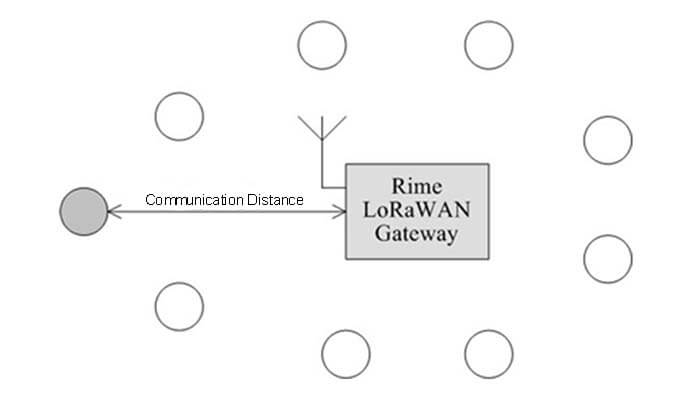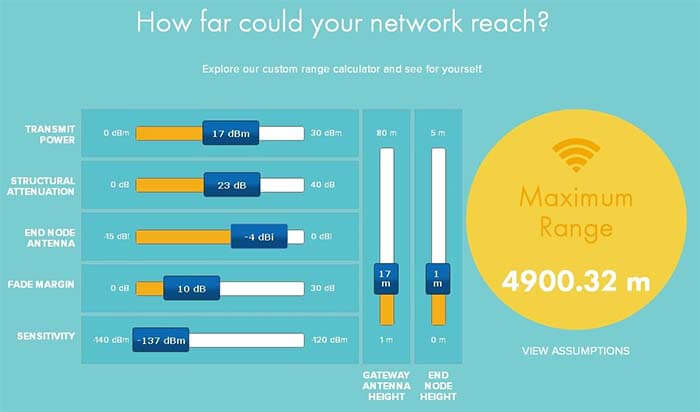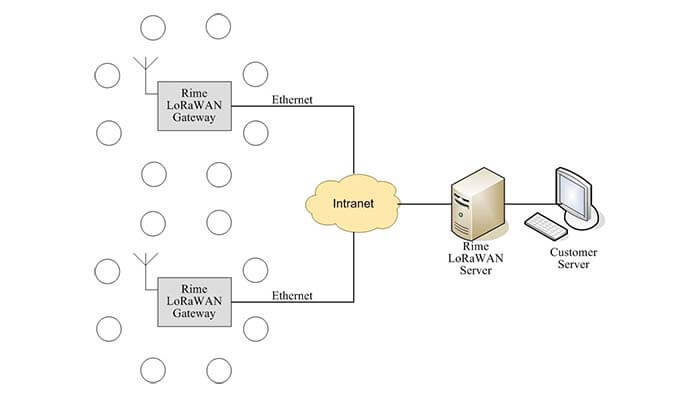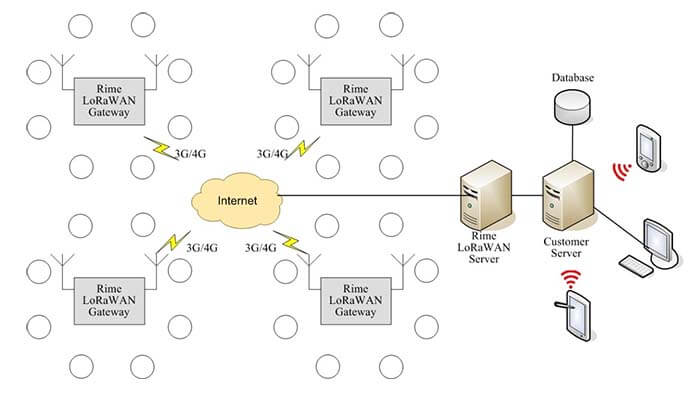What are the Lora devices?
LoRa devices and the LoRaWAN protocol used for smart cities, smart homes and buildings, smart agriculture, smart metering, smart supply chain, and logistics, and more.
LoRa has become a rising star in Internet of Things communication technology due to its “long-range and low power consumption” advantages.
LoRaWAN has obvious advantages: high capacity, globally unified standard, free frequency band with Lora 433MHz, Lora 868MHz, and Lora 915MHz, low cost, and flexibility. Like WiFi, it has become a major choice for the “Private Internet of Things”. (NB-IoT such as GPRS is public Networking program). Many domestic companies and universities are now at the climax of building the LoRa Internet of Things.
Lora device construction elements
Demand is the source of the project! Similarly, to build the Internet of Things, you must first plan the following requirements.
Distance

Due to its long-distance characteristics, the LoRa devices Internet of Things is mainly a star network, and the distance refers to the communication distance from the farthest node to the Lora gateway, as shown in the figure above.
The communication distance of LoRa devices depends greatly on the terrain and environment under the same “transmission power + communication speed + antenna” conditions, balloon communication of high altitude elephants is 40 km, communication of two hills or towers is 15 km, relatively open area communication reaches 5km … Due to different wireless communication environments, it can only be based on the Open Line of Sight, in other environments the actual measurements take precedence.
What if the communication distance is not enough? In general, there are three methods.
Reducing the communication speed improves the reception sensitivity.
Replace the high gain antenna and adjust the antenna orientation.
Increase the number of gateways and effectively cover the blind area of the signal.

LinkLabs has announced a way to calculate the distance of a LoRa device network. It’s very interesting, as you can see in the figure above. Dragging some variables to the left will automatically set the valid distance to the right. It will be calculated.
The original link is https://www.link-labs.com/symphony
Scale
Scale is a colloquial term for number of nodes and is an easy-to-count variable.
Bandwidth
The more common name for bandwidth here is the demand for network throughput, in units of bits per second.
Example: 100 nodes, each node reports 37 bytes every 60 seconds. The LoRaWAN protocol typically requires the addition of 13 bytes of metadata (frame headers and inspection), so the required bandwidth is:
(37 + 13) x 8 bits / 60 seconds x 100 = 667 bps
Power consumption
Saving energy is an important indicator when the Lora devices and sensors (or actuators) are battery-powered.
Thanks to LoRaWAN Class A’s “no sync” feature, your Lora devices’ energy savings are outstanding.
Generally, power consumption is calculated by “mode + current + duration”.
Taking his LoRaWAN Node of Lora devices from RM Communication as an example, the operating modes are different and the power consumption is as follows.
Sleep = 1.6uA, listening = 13mA, emission (17dBm) = 88mA.
If the Lora device LoRaWAN terminal sends a data frame of about 1000ms every 10 minutes, according to the protocol, it wakes up within 1 second after transmission, the listening time is 160ms, the reception time is 1000ms, and the rest is in sleep mode. 10 minutes (600) The energy consumption in units of seconds) is as follows.
Transmission: 1000ms * 88mA = 88mA.s
Received: 1160ms * 13mA = 15.08mA.s
Sleep: (600 – 1 -1.16) s * 1.6uA = 0.96mA.s
Average power consumption: (88 + 15.08 + 0.96) mA.s / 600s = 0.17mA
The total power of the two AA batteries (Nanfu or Shuanglu) is about 2400mAH and the working time is 2400mAH / 0.17mA = 14118H = 1.6 years.
Topology of Lora devices
As network nodes grow in size, the number of corresponding Lora gateways increases and multistar networks are cascaded. For more information, see Medium LoRaWAN / Large LoRaWAN the following.
Lora device cost
Lora device cost is a more complex topic, with tangible costs (such as equipment purchase, deployment, and construction) as well as intangible costs (such as development and debugging, and technical support).
An easy way to calculate the cost is to divide all the costs of the LoRa devices Internet of Things (tangible cost + intangible cost) by the number of nodes to get the single point construction cost.
There are two basic principles for the cost of LoRa devices IoT.
Mass prioritizes:
This is the basic principle of the market economy and will not be explained.
Industry Maturity:
The industry is relatively high in the early stages due to unaveraged costs (R&D/manufacturing/marketing/support, etc.).
Point-to-point Lora devices
LoRa devices’ point-to-point systems actually have a small number of application scenarios. For example, use a handheld to read an energy meter (power/water/gas/calorimeter), a remote control valve, and so on. Of course, the limits are clear.
There is no conflict avoidance mechanism.
Without the LBT (Listen Before Talk) mechanism, if two or more nodes transmit at the same time, the radio signal will be damaged and communication failure will occur.
Receiving node cannot consume low power:
The receiving node must always wait for a signal from the transmitting node and cannot sleep.
Unable to network automatically:
Conflict avoidance and low-power interception could not solve the problem, and the network became a castle in the sky.
TDMA Lora devices
You can use the LoRa-TDMA system if your network requirements meet the following conditions:
1) The number of nodes is small.
2) There are rules regarding reporting and transmission of communications.
3) Bandwidth requirements are very low.
The advantage of LoRa-TDMA is that small networks can be realized at low cost.
At the same time, its drawbacks are clear. The network capacity is limited and the delay increases in proportion to the number of nodes. For N = 10, the node must wait (10 x slots) for an hour before allowing the report. If N = 100, the node must wait (100 x slots) for an hour before allowing the report.
Small LoRaWAN Lora devices
If you have a small number of nodes but want real-time performance and throughput, a smaller LoRaWAN is a good solution.
The advantage is that 8 channels, 8 nodes can report at the same time, the standard is unified, and devices from various manufacturers can be interconnected.
The LoRaWAN Server is always present in the LoRaWAN architecture. Using a cloud server can reduce complexity to a limited extent, but it does bring complexity.
Small LoRaWAN: Server localization
Medium LoRaWAN Lora devices
If you need to improve real-time performance or network capacity, we recommend adding a LoRaWAN gateway.
In a LoRaWAN network, adding one or more gateways does not cause contention, as shown in the figure below.

Brain has only one LoRaWAN server, so it does the following clever logic:
Redundancy Report:
If a data packet is received by multiple gateways, the server identifies the duplicate data packet based on her ID and FCnt and receives only one copy.
Outgoing Gateway Selection:
The server always selects the appropriate gateway (often the best signal strength) to send downlink data frames.
Medium LoRaWAN:
Server localization
Large LoRaWAN Lora devices
LoRaWAN’s original intention was to provide the Internet of Things at the telecom level to regions, countries, and even the world, which is an ambitious plan.
As shown in the figure below, with the help of 3G / 4G technology, many LoRaWAN gateways are connected to the server, CustomerServer provides high-capacity storage and intelligent computing, and authorized terminals (such as PCs, smartphones, Provides convenient data access and interaction to the tablet).
Currently, LoRa is fiercely competing with communication-level solutions such as NB-IoT (China), eMTC (US), and SigFox (France), but at the same time, a valuable solution for building large-scale IoT offers.
Large LoRaWAN: Server localization

You know How To Choose LoRa Devices now, if you have any Lora antenna questions, please read our ANTENNA FAQ section, if you still cannot get the answer you need, please contact us.
You may also be interested in the below articles.



